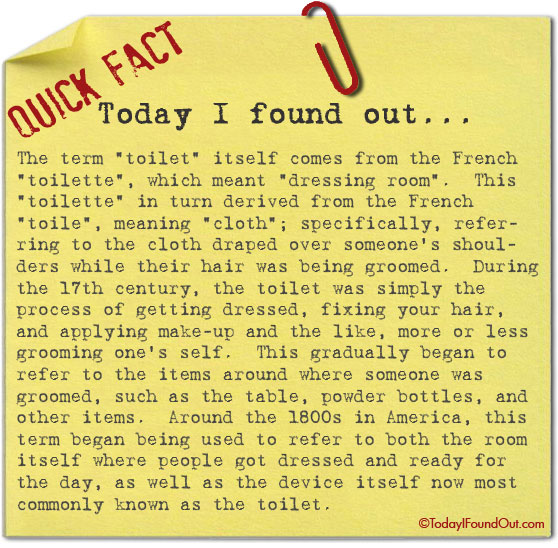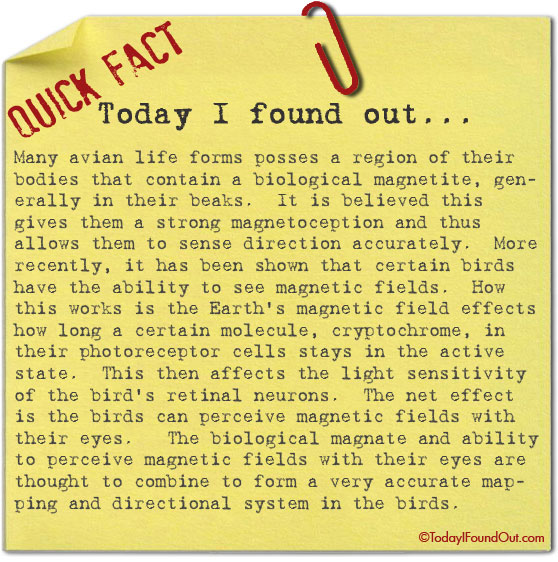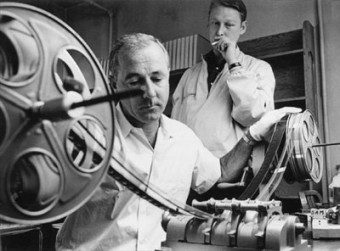- Where the Word "Toilet" Comes From
- How Birds Navigate
- Flixlab's New iPhone App and Moving Editing Facts
| Where the Word "Toilet" Comes From Posted: 27 Jun 2011 03:16 AM PDT
##EMBED## The term "toilet" itself comes from the French "toilette", which meant "dressing room". This "toilette" in turn derived from the French "toile", meaning "cloth"; specifically, referring to the cloth draped over someone's shoulders while their hair was being groomed. During the 17th century, the toilet was simply the process of getting dressed, fixing your hair, and applying make-up and the like, more or less grooming one's self. This gradually began to refer to the items around where someone was groomed, such as the table, powder bottles, and other items. Around the 1800s in America, this term began being used to refer to both the room itself where people got dressed and ready for the day, as well as the device itself now most commonly known as the toilet. Click Here for Sources and to Learn Why the Toilet is Sometimes Called a John |
| Posted: 27 Jun 2011 03:10 AM PDT ##EMBED## Many avian life forms posses a region of their bodies that contain a biological magnetite, generally in their beaks. It is believed this gives them a strong magnetoception and thus allows them to sense direction accurately. More recently, it has been shown that certain birds have the ability to see magnetic fields. How this works is the Earth's magnetic field effects how long a certain molecule, cryptochrome, in their photoreceptor cells stays in the active state. This then affects the light sensitivity of the bird's retinal neurons. The net effect is the birds can perceive magnetic fields with their eyes. The biological magnate and ability to perceive magnetic fields with their eyes are thought to combine to form a very accurate mapping and directional system in the birds. Click Here for Sources and to Learn About How Many Senses Humans Actually Have |
| Flixlab's New iPhone App and Moving Editing Facts Posted: 24 Jun 2011 05:03 AM PDT This is a Sponsored post written by me on behalf of Flixlab for SocialSpark. All opinions are 100% mine. Flixlab allows you to take videos and pictures from your iPhone or from the iPhones of people around you who are also recording the same event as you and don't mind sharing what they're recording, it then allows you to very easily compile these all into a great quality video of the event. You just select the clips, tag people in them if you like, choose transitioning effects and any music you want, including from your own music library or Flixlab's, and then Flixlab goes to work compiling the video into a professional looking final product. You certainly lose a lot of editing options in this type of system, but the gain is that, in a matter of minutes, you can have a fully edited video thanks to the Flixlab engine, instead of just having a bunch of clips sitting on your iPhone that you never get around to compiling into a video. So basically, the three main things that make Flixlab stand out from typical video editing software is that Flixlab automatically makes movies for you with no complicated editing or the like needed. It allows you to pull in clips of the thing you're trying to record from other users of Flixlab around you who are willing to share; for instance, if you're recording a wedding, you can pull in other shots from people also recording in order to be able to create a much better quality end video. It also allows for easy sharing of the final created video via Facebook, Youtube, email, etc. And now for the movie editing Bonus Factoids:
Sources:
|
| You are subscribed to email updates from Today I Found Out To stop receiving these emails, you may unsubscribe now. | Email delivery powered by Google |
| Google Inc., 20 West Kinzie, Chicago IL USA 60610 | |
--
CoolcollectionsForYou
http://groups.yahoo.com/group/CoolCollectionsForYou/
====================================================
Group Email Addresses
Post message: CoolCollectionsForYou@yahoogroups.com
Subscribe: CoolCollectionsForYou-subscribe@yahoogroups.com
Unsubscribe: CoolCollectionsForYou-unsubscribe@yahoogroups.com
List owner: CoolCollectionsForYou-owner@yahoogroups.com
R i z w a n-A l a m - Owner
Alam.Rizwan@Yahoo.com
Shamsher Afridi - Sr. Moderator
jimrizin@Yahoo.com
Raj Singh Tomar - Moderator/Designer
rajsinghtomar@aol.com
Nikita Anand - Moderator/Designer
hotnsexytulip@yahoo.com
------------------
DISCLAIMER :
------------------
This message serves informational purposes only and should not be viewed as an irrevocable indenture between anyone. If you have erroneously received this message, please delete it immediately and notify the sender at CoolCollectionsForYou-Owner@yahoogroups.com. The recipient acknowledges that any views expressed in this message are those of the Individual sender and no binding nature of the message shall be implied or assumed unless the sender does so expressly with due authority of The C.C.4.U. Group. reserves the right to repeal, change, amend, modify, add, or withdraw the contents herein without notice or obligation.
---------------------------------------------------
Note:- CoolCollectionsForYou is Not Responsible For Any Claims.
---------------------------------------------------


 Flixlab just launched their new free state of the art automatic video editor app for iPhones and iPod touches. This app was developed by a group of PH.D's who were seeking a way to help people who lack the time or expertise to create good quality home-made videos and compilations from clips and pictures you or your friends have taken.
Flixlab just launched their new free state of the art automatic video editor app for iPhones and iPod touches. This app was developed by a group of PH.D's who were seeking a way to help people who lack the time or expertise to create good quality home-made videos and compilations from clips and pictures you or your friends have taken.
No comments:
Post a Comment